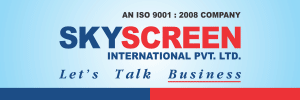
Adidas to steal further market share from Nike in 2025 forecasts GlobalData
05 August 2025: Tough economic conditions and consumers’ discerning shopping habits will continue to cause significant disparity in the performance of apparel brands in 2025. Against this backdrop, Adidas is forecast to remain one of the biggest winners within the global apparel market in 2025, stealing market share from Nike, according to GlobalData.
Tom Ljubojevic, Apparel Analyst at GlobalData said “Brands that can quickly react to trends and offer good value for money will have the opportunity to gain share, whereas those that are unable to compete on price or style are forecast to lose out. Adidas’ market share is estimated to rise by 0.1 percentage points (ppts) to 1.9% in 2025, driven by the continued popularity of its Originals lines and the success of its performance footwear. Elsewhere within sportswear, New Balance and Skechers are also expected to gain share, bolstered by their versatility, alongside their high-profile athlete and brand partnerships.
“These sportswear players will continue to take share from Nike, which is forecast to see the biggest drop overall, falling 0.3ppts to 2.6%. A combination of a lag in innovation, and weaker style credentials have caused this decline. Although the recent delay of NikeSKIMS will not help the brands’ situation, it is now focusing on its performance categories, and its athlete strategy to help it return to growth.”
Shein is also expected to continue gaining significant share in 2025, further building on its success from the last few years. Its market share is forecast to grow 0.1ppts to 1.7%. While the company’s growth now slowing due to its established presence, its low-cost products and ability to capitalize quickly on trends helps it to keep stealing share from competitors.
Ljubojevic continues “In terms of the other mass market fashion brands, Uniqlo is also predicted to win big this year, with its market share forecast to rise 0.1ppts to 1.0%, as its timeless designs and good quality products resonate with consumers seeking value for money. Conversely, its high street competitors, Zara and H&M, are expected to slow, with Zara to maintain flat market share, and H&M falling 0.1ppts to 1.0%. Both brands have been unable to compete on price with Shein, and while Zara is expected to maintain share through its superior fashion credentials, H&M’s lackluster designs will continue to hold it back.”
In luxury, Hermès is forecast to buck the trend of the wider slowdown, with an estimated 2025 market share increase of 0.03ppts to 0.59%. This resilience is down to the brand’s focus on a more affluent consumer base, who are less impacted by economic difficulties, due to its high-quality craftsmanship and status-signifying exclusivity of products.
Ljubojevic concludes “In contrast, Gucci is predicted to lose out, as its market share is forecast to fall 0.10ppts to 0.28%. As aspirational shoppers remaining cautious with their spending, and the ultra-wealthy not engaging with its latest designs and lack of exclusivity, former creative director Sabato De Sarno’s lackluster minimalism has failed to create excitement. Similarly, Louis Vuitton is forecast to lose 0.05ppts of market share to reach 0.85%, as it particularly loses younger luxury consumers to brands like Prada and Miu Miu, which offer more trendy aesthetics.”






